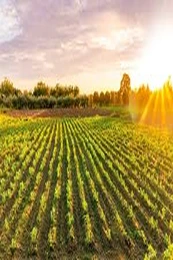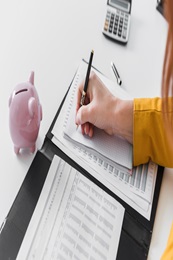What is ATM? Types, Benefits and How to Use
April 15, 2025

ATM stands for Automated Teller Machine (ATM). Today, ATMs have become a cornerstone of modern banking, providing seamless access to financial services anytime, anywhere. These machines revolutionised banking by eliminating the need for in-person teller services for routine transactions, saving time and minimising human errors. From cash withdrawals to fund transfers, ATMs offer a wide array of banking solutions. Let’s dive deeper into the various aspects of ATMs and their significance in today's financial landscape.
What is an ATM?
An Automated Teller Machine (ATM) is an electronic banking device designed to facilitate various financial transactions without human assistance. By inserting a debit or credit card and entering a Personal Identification Number (PIN), users can perform tasks like withdrawing cash, checking balances, transferring funds, and even paying bills. ATMs are available 24/7, making them a crucial tool for convenient banking, especially outside regular bank hours.
Key Features of ATMs
ATMs have evolved significantly over the years, offering a broad range of features:
1. Cash Withdrawal
The most common function, allowing users to access their funds quickly. However, there’s a cap on the amount that can be withdrawn every day, which may vary across banks.
2. Balance Inquiry
Provides an up-to-date account balance. All you need to do is tap on the option (Balance Enquiry) of the ATM display screen. Once done, you will be able to see your account balance. Additionally, you can opt for a receipt – the receipt will have the details of your account balance.
3. Fund Transfers
You can also carry out easy money transfers between accounts.
4. Deposits
Some ATMs, also known as Cash Recycler Machines, allow cash or cheque deposits, updating the account immediately.
5. PIN Changes
Users can reset or change their debit card PIN for enhanced security.
6. Card Activation
Newly issued cards can often be activated directly at the ATM.
How to Locate an ATM Near Me?
Need to withdraw cash from ATM? Instead of using other bank ATMs, where you may be charged transaction fees if you exceed the transaction limit for the month (more on this later), it’s recommended to use your own bank ATMs. To spot an ATM near to your location, you can use an ATM locator.
For example, let’s say you’re looking for an Ujjivan Small Finance Bank ATM near your location. Use our ATM Locator to check the closest ATM near you. All you need to do is select your state, city and area – it’s that simple!
How to Use a Ujjivan Small Finance Bank ATM for Cash Withdrawal
Step 1: Locate your nearest ATM. Keep your Debit Card and PIN ready
Step 2: Insert your Ujjivan Debit Card
Step 3: Choose your preferred language – English, Hindi or regional language
Step 4: Select ‘Withdrawal’
Step 5: Enter Your PIN. The ATM will authenticate your PIN
Step 6: Enter the amount
Step 7: Withdraw cash and remove your card
Types of ATMs
ATMs come in various forms, catering to different user needs and banking environments.
1. On-Site ATMs
Located within or near bank branches, offering the highest level of security and access to all banking services.
2. Off-Site ATMs
Found in high-traffic areas like malls, airports, and gas stations, providing convenient access to basic services such as cash withdrawals and balance inquiries.
3. White-Label ATMs
Operated by non-bank entities, white-label ATMs are accessible to customers of various banks.
4. Brown-Label ATMs
Owned by banks but operated by third-party service providers. The bank manages cash loading and branding, while the third party handles maintenance.
5. Specialised ATMs in India
- Green Label ATMs: Focused on agricultural transactions, supporting farmers with subsidies, loans, and crop insurance.
- Orange Label ATMs: Dedicated to stock market transactions.
- Yellow Label ATMs: Designed for e-commerce payments.
- Pink Label ATMs: Created with women’s safety in mind, often located in secure, well-lit areas.
Benefits of Using ATMs
ATMs offer numerous advantages that make them indispensable in today’s fast-paced world:
1. Round-the-Clock Availability
With 24/7 access, ATMs ensure users can conduct essential banking operations anytime, even on holidays.
2. Convenience and Accessibility
Strategically located ATMs in urban and rural areas make banking services more accessible, reducing the need for branch visits.
3. Reduced Bank Queues
By handling routine transactions, ATMs alleviate congestion in bank branches, improving service efficiency.
4. Enhanced Security
Modern ATMs are equipped with anti-skimming technology and encryption protocols, safeguarding user data and preventing fraud.
Design and Components of ATMs
Every ATM is designed with a combination of input and output devices to ensure smooth and secure transactions.
1.Input Devices
- Card Reader: Reads information from the card’s magnetic strip or chip to initiate transactions.
- Keypad: Allows users to input their PIN and select transaction options securely.
2.Output Devices
- Display Screen: Guides users through the transaction process with visual instructions.
- Cash Dispenser: Delivers the requested cash amount.
- Receipt Printer: Provides a printed record of the transaction.
- Speaker: Offers audio instructions for visually impaired users.
Security Measures for ATM Users: Safe Banking Tips
To ensure safe transactions, it’s crucial to adopt the following security practices:
- Shield Your PIN: Use your hand to cover the keypad when entering your PIN.
- Inspect the ATM: Check for unusual devices attached to the card slot that could indicate skimming attempts.
- Monitor Your Account: Regularly review your bank statements for unauthorized transactions.
- Avoid Sharing Your PIN: Never disclose your PIN to anyone, including bank staff.
Are There ATM Fees and Charges for Cash Withdrawals in India?
In India, ATM usage comes with specific fees and charges, varying by bank, transaction type, and ATM network. Understanding these charges can help consumers make informed decisions and minimise costs.
With Ujjivan Small Finance Bank, the transaction limit varies based on the type of account you have. For example, if you have a Privilege Savings Account, you can do unlimited free transactions across Ujjivan and other bank ATMs. If you have a Digital Savings Account, you can do up to 5 free transactions across Ujjivan and other bank ATMs.
Latest Information on ATM Fees and Charges
The Reserve Bank of India (RBI) has approved an increase in ATM interchange fees, raising charges by ₹2 for financial transactions and ₹1 for non-financial transactions. According to a report by The Financial Express, this revision will take effect from May 1.
As a result, the fee for cash withdrawals will rise from ₹17 to ₹19 per transaction, while the cost of a balance inquiry will increase from ₹6 to ₹7 per transaction.
ATM interchange fees refer to the charges that one bank pays another for facilitating ATM services to customers. This change is expected to significantly affect smaller banks with a limited ATM network.
The last revision of interchange fees by the RBI took place in June 2021. However, banks have yet to decide whether these increased costs will be passed on to customers.
To know more about ATM transaction fees and charges, click here.
Final Thoughts
ATMs have transformed the way we handle daily banking by offering convenience, security, and accessibility. Whether it’s withdrawing cash, checking balances, or transferring funds, ATMs simplify our financial transactions, making banking more accessible for everyone. By understanding how ATMs work and the associated fees, consumers can maximize their benefits while minimizing costs, leading to a more efficient banking experience.
Now enjoy easy banking with Ujjivan Small Finance Bank. Save more with our high-interest Savings Account and Deposit products. Need cash for your business or personal needs? Apply for MSME Loans or Micro Loans with us – we offer competitive rates and quick disbursal. We also offer vehicle loans and home loans tailored for your unique requirements. Experience a smooth banking journey with Ujjivan SFB!
FAQs
1. What is the full form of ATM?
ATM stands for Automated Teller Machine.
2. Can I use any ATM to withdraw cash?
Yes, but using another bank’s ATM may incur fees after a set number of free transactions.
3. Are ATMs safe to use?
Yes, modern ATMs have advanced security features like encryption and anti-skimming technology.
4. How do I reset my PIN at an ATM?
Select the "Change PIN" option on the ATM menu and follow the prompts.
5. What is a White-Label ATM?
A White-Label ATM is operated by a non-bank entity, allowing customers of different banks to use it.
6. Are there limits on cash withdrawals?
Yes, limits vary by bank and card type.
7. Can I deposit cash at all ATMs?
No, only cash deposit-enabled ATMs accept deposits.
8. Do ATMs work during power outages?
Yes, ATMs have backup power systems but may go offline if outages are prolonged.
9. What should I do if my card is stuck in an ATM?
Immediately report it to your bank’s customer care for assistance.
10. Is there a fee for checking balances at an ATM?
Balance inquiries at other bank ATMs beyond the free limit incur a fee. Please check Ujjivan SFB’s fees and charges for more clarity.
Latest Blogs

Telangana Housing Board & KPHB Colony: A Guide to Affordable Urban Housing in Hyderabad
March 14, 2025
As Telangana continues its rapid urbanisation journey, two key housing entities—Telangana Housing Board (THB) and Kukatpally Housing Board Colony (KPHB)—have played critical roles in shaping the state's real estate ecosystem.

Does Checking CIBIL Score Frequently Lower Your Credit Points?
April 07, 2025
Imagine you're planning to apply for a home loan, a credit card, or even a car loan. Naturally, you want to ensure your CIBIL score is in good shape before proceeding.

Explained: Can NRIs Buy an Agricultural Land in India?
April 03, 2025
Real estate investment is often a top priority for Non-Resident Indians (NRIs) looking to retain strong financial ties to India.

How to Improve Your CIBIL Score from 600 to 750: A Step-by-Step Guide
April 02, 2025
Your CIBIL score is like your financial reputation—banks check it before approving loans or credit cards. If your score is hovering around 600, you might face difficulties in securing credit or may get loans with higher interest rates.

What Happens When You Leave Your Savings Account Unused?
April 01, 2025
Imagine waking up one day to find that your hard-earned money is locked away and inaccessible. Sounds stressful, right? This is precisely what happens when you leave your Savings Account inactive for too long.





